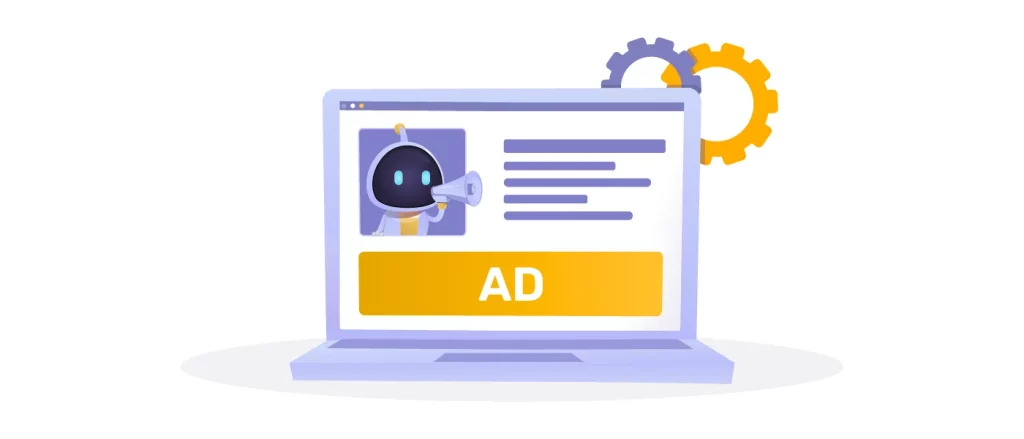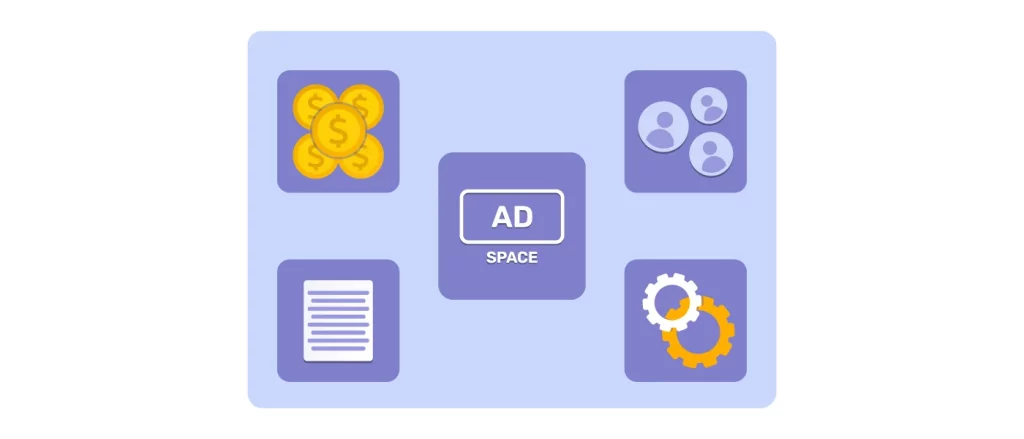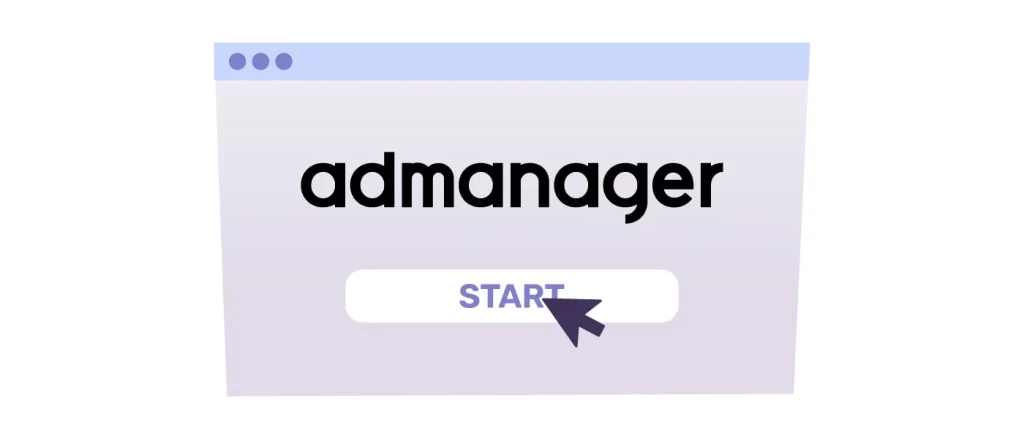Is Programmatic Direct Right for Your Ads?
Adtech keeps getting more complicated. New platforms pop up constantly, and something changes when you think you’ve figured it out. Getting your ads in front of the right people shouldn’t be this frustrating.
And yet, the more automated everything becomes, the harder it is to stay in control. You set up a campaign, let the system do its thing, and hope for the best. But what if there was a way to get premium ad spots without the uncertainty?
That’s where programmatic direct comes in. It gives advertisers more say over where their ads appear and makes buying ad space simple, without the hassle of auctions. Instead of leaving it all to algorithms, advertisers and publishers can agree on direct deals that bring better results for both.
So, how does it work, and why are more brands making the switch?
Table of Contents
Programmatic Direct: What You Need to Know

If digital advertising has taught us anything, it’s that control matters. Advertisers don’t just want their ads to run—they want to know where they’re running, who sees them, and whether they’re making an impact. But with so many moving parts, automated placements can feel like a gamble.
This is where programmatic direct comes in. Advertisers can purchase ad space directly from publishers through a pre-arranged agreement. Unlike auction-based models, this method involves fixed terms, pre-agreed pricing, and direct negotiation between parties.
Think of it as a structured way to secure ad inventory without the uncertainty of bidding. Instead of competing in a real-time auction, advertisers know where their ads will appear under conditions set in advance.
At its core, Programmatic Direct is an automated way for advertisers to secure digital ad placements through one-on-one agreements with publishers.
Programmatic Direct: How It Works
The process follows a structured path once advertisers decide to use Programmatic Direct. Unlike auction-based programmatic buying, where ads are placed in real time through bidding, programmatic direct secure ad placements in advance under agreed-upon terms.
What typically happens:
- Initial Outreach
A publisher reaches out to an advertiser, or vice versa, with an offer for available ad space. This is usually done through a Supply-Side Platform (SSP), where advertisers can browse available inventory, and publishers can list their ad placements.
- The Agreement
Both sides discuss pricing, placement, and the number of impressions. Since this isn’t an open auction, the price is fixed from the start, clarifying costs and where the ads will appear.
- Campaign Goes Live
Once everything is set, the advertiser’s ads start running on the publisher’s site exactly as agreed, reaching the intended audience without any last-minute bidding or unexpected changes.
Automated direct advertising saves the trouble of using auctions and crossing their fingers. It provides complete transparency on the placement and cost of their adverts. Because of this, marketers can more easily organize their campaigns and have their advertising seen in the correct areas.
Programmatic Direct vs. Other Advertising Methods
When choosing a programmatic advertising strategy, advertisers often compare direct vs. programmatic advertising and wonder which approach gives them the most control. Programmatic Display includes different buying methods, from Real-Time Bidding (RTB) to private marketplaces (PMP) and direct deals. Still, programmatic open exchange (RTB in the open market) remains the most widely used due to its scale and automation, though it lacks the predictability of Programmatic Direct.
With Real-Time Bidding (RTB), advertisers compete in a live auction, and the highest bid wins the placement. It’s automated, scalable, and cost-efficient, but lacks predictability—you don’t always know where your ad will appear or how much you’ll pay.
A Private Marketplace (PMP) works similarly but is invite-only, meaning advertisers can bid for premium inventory in a more controlled environment. However, since bidding still determines the price, costs remain variable, and impressions aren’t guaranteed.
Programmatic Direct removes this uncertainty. Instead of relying on auctions, advertisers secure ad placements directly from publishers at a fixed cost per thousand impressions (CPM). This guarantees brand safety, better placement control, and no price fluctuations.
While PMP and RTB offer flexibility, programmatic direct is the preferred choice for advertisers who want to secure high-quality inventory without the unpredictability of bidding.
Types of Programmatic Direct Deals
Not all programmatic direct deals work the same way. Here are the main types advertisers can choose from:
- Private Auctions (PMP): This is an invite-only auction where selected advertisers bid for premium ad placements. Publishers may set a minimum price, ensuring higher-quality ads. Unlike open auctions, not everyone can join.
- Preferred Deals: The advertiser and publisher agree on a fixed CPM, but the advertiser isn’t required to buy. They get access to the ad space first and can decide whether to proceed with the deal.
- Guaranteed Deals (Programmatic Guaranteed): The advertiser commits to buying a set number of impressions at a fixed price. There is no bidding, no uncertainty, just guaranteed placements.
- Automated Guaranteed: This works like Guaranteed Deals, but everything—from negotiation to ad delivery—is fully automated, requiring no manual involvement.
- Programmatic Reserved is another term for Guaranteed Deals, emphasizing that the inventory is set aside exclusively for the advertiser before the campaign starts.
Each deal provides different levels of control, flexibility, and commitment, allowing advertisers to choose what best suits their strategy.
The Benefits of Programmatic Direct Advertising

Unlike auction-based advertising, programmatic direct lets advertisers know exactly where their ads will appear. This means no surprises, no fluctuating prices, and no unnecessary risks. Why brands choose this approach:
- You pick where your ads show up – Instead of leaving it to algorithms, advertisers work directly with publishers to place ads on relevant and high-quality websites. No more guessing where your brand will be seen.
- You pay a set price – Costs don’t change based on demand or last-minute bids. Advertisers agree on a fixed price upfront, making budgeting simpler.
- Guaranteed ad spots – Advertisers lock in a specific number of impressions, so they don’t have to worry about losing placements to other bidders.
- Ads reach the right audience – Because advertisers choose their placements carefully, ads are more likely to be seen by the right people, leading to better results.
- More useful data – Working directly with publishers means access to better audience insights without relying on third-party tracking.
- Less risk of fraud – Since there’s no open bidding, ads are less likely to be served on low-quality or fake sites, protecting advertisers from wasted spending.
- Fewer mistakes – Everything is set up in advance, reducing the chance of misplaced ads or technical errors.
Challenges of Programmatic Direct
While programmatic direct offers many advantages, it’s not without its challenges. Some limitations advertisers should consider:
- Not all ad space gets sold – Some placements may remain unsold, but ad mediation can help. In such cases, publishers might have to sell leftover inventory elsewhere.
- Deals are locked in – Once an agreement is made, the price and placement stay fixed. If performance isn’t as expected, advertisers can’t make quick adjustments.
- Difficult for smaller brands – High-profile publishers usually prioritize advertisers with bigger budgets, making it harder for smaller companies to access premium inventory.
- Requires technical setup – Advertisers need direct access to a publisher’s ad server, often through an API, which can add extra steps to the process.
- Longer to set up—Unlike automated auctions, direct deals involve negotiation and coordination, which can slow down the process.
- Competition with header bidding – Many publishers use header bidding to maximize their revenue, which means fewer placements may be available for direct deals.
When Should You Use Programmatic Direct?
Programmatic Direct is best suited for advertisers who want more control over where their ads appear and how they are delivered. It’s a great choice in these situations:
- When brand safety matters – Advertisers who want their ads to appear only on trusted, high-quality websites can use direct deals to avoid risky placements.
- When guaranteed impressions are needed – Unlike auction-based buying, direct deals provide a set number of impressions at a fixed price, assuring campaign reach.
- For premium ad placements – Top publishers often reserve high-value placements (like homepage banners) for programmatic direct deals.
- For long-term campaigns – Direct deals offer stability without price fluctuations if you’re running an ad campaign for weeks or months.
- When avoiding bidding wars – Competitive markets can cause auction prices to spike, but direct deals lock in pricing upfront.
- For exclusive partnerships – Some brands want consistent visibility on specific sites, and programmatic direct helps secure that presence.
- When better audience targeting is needed – Advertisers can negotiate access to first-party data from publishers, helping them reach the right users more effectively.
Programmatic direct isn’t always the cheapest option, but it’s the right choice when quality, control, and predictability matter.
How to Get Started with Programmatic Direct

Setting up a programmatic direct campaign is straightforward but requires the right tools and access to premium inventory.
While many advertisers use Google Ad Manager for programmatic direct deals, platforms like Sevio Ad Manager also provide direct access to premium advertisers. These platforms help manage pricing, placements, and campaign execution efficiently.
Sevio allows publishers to configure ad items with a priority level (0 to 4), ensuring direct-sold ads bypass the RTB auction. As a result, ad items are served based on the priority level set. Here’s the step-by-step process:
- Access the Sevio Ad Manager: Log in to your Sevio account and navigate to the dashboard.
- Enable Programmatic Direct Deals: Configure your ad inventory within Ad Manager to allow direct deals.
- Set Up a Direct Campaign: Define parameters such as targeting options, pricing models, and ad creatives.
- Assign Campaigns to Ad Zones: Link the campaign to specific ad placements on your site or app.
- Configure Ad Serving Limits and Priorities: To control how ads are served, adjust settings like frequency capping, ad weight, and priority levels (0-4).
Sevio Ad Manager streamlines this process, allowing publishers to offer brand-safe, high-quality ad placements without the unpredictability of open auctions, so get in touch!
The Future of Programmatic Direct
Programmatic Direct is changing as digital advertising moves forward. One shift is the growing use of first-party data. With third-party cookies disappearing, advertisers will rely more on direct deals with publishers. This will help them reach the right audience without depending on external tracking.
Automation is also improving. AI is helping advertisers adjust pricing and manage campaigns faster. While direct deals remove much of the manual work, new tools will further streamline the process.
At the same time, Programmatic Direct is expanding beyond display and video ads. More advertisers are using it for connected TV (CTV), digital audio, and in-game advertising, giving them more ways to connect with audiences in different formats.
Another change is better fraud prevention. Since direct deals use pre-approved placements, advertisers can avoid many risks in open auctions, ensuring their ads appear in trusted environments. More premium publishers are also shifting towards Programmatic Direct. This means advertisers will have greater access to high-quality placements that were once harder to secure.
With these updates, Programmatic Direct will remain a reliable choice for advertisers who want more control and predictable results.
FAQ
It depends on your goals. Since programmatic direct guarantees ad placements in advance, performance is more predictable. You won’t have to worry about losing placements to higher bids, but you might pay more than auction-based ads.
Yes! Programmatic Direct isn’t just for websites and mobile apps, video ads, and even connected TV (CTV). Many advertisers choose this method to secure premium in-app placements and ensure their ads reach engaged users.
Success depends on what you’re tracking. Advertisers usually look at how many people see the ad (viewability), how many interact with it (engagement), and whether it leads to conversions. Because placements are set in advance, comparing results with expectations is easier.
Unused impressions don’t usually roll over, so advertisers need to plan their campaigns carefully. Sometimes, publishers may offer bonus placements (makegoods) if ads aren’t delivered as expected.
Final Thoughts
Programmatic Direct makes digital advertising more straightforward and reliable by allowing advertisers to buy ad space directly from publishers. Instead of dealing with unpredictable auctions, brands can secure placements in advance and know exactly where their ads will appear.
While it may not be the right choice for everyone, Programmatic Direct is a strong option for advertisers who want stability and control. As more companies look for better ways to manage their ad campaigns, PD will continue to be a trusted solution in digital marketing.